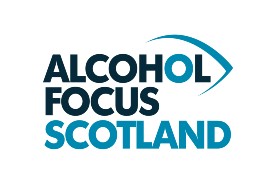News
- Alcohol Emergency continues as latest ONS Deaths Data Published
- AFS Welcomes Parliamentary Vote to Increase MUP
- AFS welcomes HSCSC vote in favour of increasing MUP
- New PHS Dashboard reveals true scale of alcohol harm
- Response to questions regarding AFS funding
- Alcohol related hospital admissions down but alcohol harm still too high
- Stand Firm and Save Lives
- AFS welcome Scottish Government plans to increase MUP
- Levy on supermarkets could raise £57 million a year
- Support for a Public Health Levy on alcohol sales
- First Minister commits to reduce childrens exposure to alcohol marketing
- Survey shows post-pandemic increase in drinking for some
- Scottish Government commit to further plans to restrict alcohol marketing
- Challenge and Change: Rod Anderson
- Parliament must come together to renew and reinvigorate MUP
- A responsible drinking campaign that features cocktail recipes
- Unacceptable rise in alcohol-specific deaths
- Health experts share concerns about complaint made on MUP evaluation
- Decline in alcohol treatment in Scotland
- Challenge and Change: Lived Experience Voices on Alcohol Marketing
- Blog post for Alcohol Awareness Week 2023
- Final verdict on MUP
- Alcohol and diabetes
- Doctors say lack of response on alcohol deaths could spell disaster for Scotland
- MUP reduces deaths and hospital admissions
- Alcohol hospital admissions continue to be too high
- Lessons learned from countries with marketing restrictions
- What is the effect of alcohol marketing on people with or at risk of an alcohol problem?
- ONS figures show highest alcohol deaths on record
- MUP and alcohol sales
- Scottish Government launches alcohol marketing consultation
- MUP and alcohol products and prices
- New licensing policy review guide
- Health campaigners call on Scottish Government to regulate alcohol packaging
- Scottish charity calls for ban on all alcohol promotion
- New NCD Prevention Report - Mapping Future Harm
- Online Alcohol Sales & Deliveries: A survey of young people in Scotland
- Four years of MUP
- Prominent health warnings make drinking unappealing
- Insights from People in Recovery
- Report on alcohol sales and harm in Scotland during the COVID-19 pandemic
- Sugar content in wine revealed
- Alcohol hospital admissions lower during pandemic
- Study reveals those already at risk from heavy drinking bought more alcohol during lockdowns
- Alcohol policy measures could reduce ambulance callouts
- Widespread support for calls to increase minimum unit price for alcohol to 65p
- Three quarters of Scots back new controls to help protect children from alcohol advertising
- More accurate estimates for the burden of Alcohol on the Ambulance Service: around 1 in 6 callouts in Scotland are alcohol related
- How can alcohol labels be improved to help people make informed consumption choices
- Health experts call for better alcohol labelling
- Young people and their views on alcohol marketing
- Lowest alcohol sales in Scotland for 26 years
- Minimum unit pricing has lasting impact study shows
- Euros renews call for action to protect children from alcohol sports sponsorship
- Current alcohol labelling of little relevance to young adult drinkers
- Governments should step up efforts to tackle harmful alcohol consumption
- Scottish public and leading health experts back changes to alcohol labelling
- AFS calls for 65p minimum unit price for alcohol
- How will the main parties prevent harm from alcohol?
- Alcohol labelling reform is way past its sell by date
- Alcohol policy priorities for the next parliament
- Young drinkers believe prominent health warnings on alcohol could boost risk awareness
- Alcohol sales and consumption in Scotland during the pandemic
- How can we prevent alcohol deaths?
- Alcohol Deaths and Minimum Unit Pricing
- YoungScot Health Panel report on alcohol marketing and harm
- Young Scots show support for restrictions on alcohol marketing
- Better alcohol labelling - A way to boost awareness of the risk between alcohol and cancer?
- Alcohol Deaths Prevention Support
- Almost half of Scots in favour of minimum unit pricing
- Health experts campaign for better understanding of Fetal Alcohol Spectrum Disorder
- Health experts call for alcohol labelling overhaul
- Australian ministers agree to visible pregnancy warning
- Alcohol Focus Scotland welcomes new WHO report on alcohol pricing
- Survey shows Scots lockdown drinking rise caused by stress
- Statistical analysis of off-trade alcohol sales in the year following MUP
- Alcohol Focus Scotland Review of statements of licensing policy 2018 to 2023
- We need to continue long-term focus on alcohol
- Scots report changing drinking patterns during coronavirus lockdown
- Time to Blow the Whistle on Alcohol Sport Sponsorship
- New evidence demonstrates that alcohol ads lead to youth drinking
- Alcohol sales fall in first year of MUP
- First study published into under 18 drinkers post MUP
- Two years on Are annual functions reports reaching their potential?
- Scottish primary children call for action on alcohol
- Its time to tell us whats in our drinks
- A home for Rory
- Alcohol sales and MUP
- Lowest alcohol sales in 25 years
- The Children's Parliament investigates an alcohol-free childhood
- Minimum unit pricing one year on
- More about sales data
- A family of resources it is all about prevention, education and resilience
- AFS publish Review of Licensing Board Annual Functions Reports 2017-2018
- Marketing unmasked dispelling the myths and taking a stand
- No place for alcohol marketing in sport
- Scotland publishes first UK guidelines for diagnosing fetal alcohol spectrum disorder (FASD)
- The Alcohol Framework 2018 Preventing Harm
- Scotlands new drug and alcohol strategy launched
- AFS welcome new alcohol strategy
- Recent reporting on alcohol sales data
- Diageo is failing to provide latest guidelines on their products
- Drinks companies keeping consumers in dark about risky drinking
- Reducing alcohol consumption can address health inequalities
- Global first alcohol policy set to save hundreds of Scots' lives
- AFS welcomes minimum unit pricing for alcohol
- Truer picture of alcohol harm revealed
- Alcohol causes 3,700 deaths in Scotland every year
- Scotland's licensing system needs clearer direction
- Minimum pricing blog
- Minimum pricing gets green light
- Alcohol brands and young people
- Time for honest conversations about alcohol
- Q&A on alcohol marketing
- UK children anxious about parents' drinking
- Alcohol producers failing to inform public
- Concern over alcohol-related deaths
- We need to make it easier for people to drink less
- Worrying rise in alcohol-related deaths
- Minimum pricing will save lives
- Pocket money prices for alcohol continue
- Scotland's alcohol problem laid bare
- One drink a day can increase breast cancer risk
- Poverty linked to increased harm from alcohol
- SWA urged to respect minimum pricing decision
- Alcohol-free childhood is healthiest option
- SWA granted leave to appeal minimum pricing
- SWA will appeal to UK Supreme Court
- Minimum pricing can be implemented in Scotland
- Emergency services face shocking levels of alcohol abuse
- Every child has the right to grow up safe from alcohol harm
- Minimum pricing - European court ruling
Q&A on alcohol marketing
Karine Gallopel-Morvan is Professor (social marketing) at the EHESP School of Public Health, Rennes, France, and Honorary Professor at the University of Stirling.
Karine was a member of the expert network on alcohol marketing which developed our report: Promoting good health from childhood. Reducing the impact of alcohol marketing on children in Scotland (pdf)

The alcohol industry say advertising simply promotes sales of individual brands, and there is no evidence of a link between advertising and alcohol-related harm. What evidence is there to dispute this?
Much research has been conducted on the link between advertising and alcohol consumption. Studies have highlighted a dose-response relationship between exposure to alcohol advertising and the onset of drinking and heavier drinking among young people. Some specific forms of alcohol advertising have also been studied. For instance, researchers have shown an association between exposure to in-store ads (e.g. supermarkets) and alcohol use among young people; and exposure to alcohol advertising on websites and social networks has been shown to be positively correlated to alcohol-related perceptions and alcohol behaviors in minors.
Why are children and young people so important when it comes to alcohol marketing?
Like for other industries (tobacco companies, food industry, etc.), children and young people represent a very important market, and they are future consumers for brands and alcohol companies.
What are some of the tactics that the alcohol industry use to target women?
Different tactics are used by the alcohol industry: sweet and flavoured tastes, "light” drinks in order to decrease calorie intake, luxury codes displayed on ads or through packaging, presence of alcohol brands in films and TV series that women like, association with female role models (Scarlett Johansson, Kim Cattrall – Sex and the City), association of alcohol brands with breast cancer charities, etc.
Are there parallels with tobacco advertising strategies?
Yes definitely. They are strong similarities with tobacco marketing strategies and with tobacco lobbying strategies too. The aim of tobacco and of alcohol companies is to increase their market share and to fight against marketing and advertising regulations. To reach these aims, they use the same tools.
Are some forms of alcohol marketing particularly inappropriate? Or is it the overall volume of marketing which matters?
The key element to increase the effectiveness of advertising and marketing in general is repetition: the more people are exposed to ads, the more effective ads are on brand recall, positive brand perceptions and behaviours. As a consequence, a “360 degree marketing campaign” is a very effective way to reach consumers wherever they are through a wide range of media: television, mobile, social networks, radio, product placement in films, outdoor ads, banners in shops, etc. Beyond repetition, advertising content is also important for alcohol companies to increase the image and the attractiveness of their brands.
Are there successful examples of restrictions on alcohol marketing in other countries? How successful has the loi Évin been?
Countries which have implemented restrictions on alcohol marketing include France, Finland and Estonia. The loi Évin that was voted in France in 1991 contained three core measures.
- The first prohibits alcohol advertising through media targeted at young people, but other less intrusive media are allowed.
- The second measure controls advertising content in authorized situations: product information must only contain factual/informative data and objective qualities (e.g., proof, origin, composition and means of production).
- The third measure requires the health warning ‘alcohol abuse is dangerous for health’ to appear on all alcohol advertisements.
Since 1991, this law has been constantly attacked and weakened by active lobbying from alcohol producers and retailers: for example, billboard advertising that was initially banned was permitted in 1994. In 2009, a law allowed online alcohol advertising (with the exception of sport websites and websites targeting young people) and in 2015, the loi Évin was weakened once again following intense lobbying from wine producers. In addition and since 1991, legal procedures have regularly condemned illegal alcohol ads that do not respect the loi Évin: up until 2015, the French NGO ANPAA won over 80% of its 60 prosecutions brought to court. As a consequence, the 2017 version of the French Évin law does not appear effectively to protect young people from exposure to alcohol advertising in France, as a recent research conducted in France on students revealed.
What steps should Scotland take to protect children and young people from alcohol marketing?
The 1991 version of the Évin law is obviously more effective than the current version for protecting young people from exposure to alcohol ads. If Scotland wants to learn from the French experience, I recommend to base their future policies on the 1991 version of the law. Scotland must also be prepared to counteract lobbying from the alcohol industry aimed at weakening alcohol control policies and marketing regulations.
